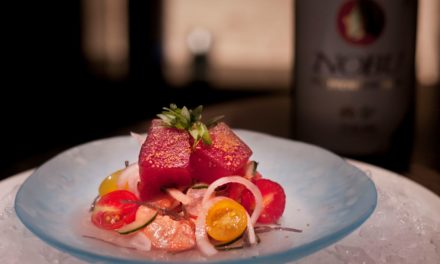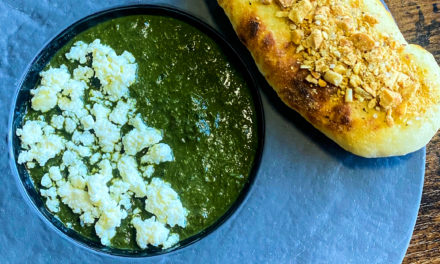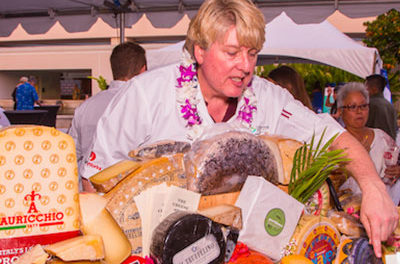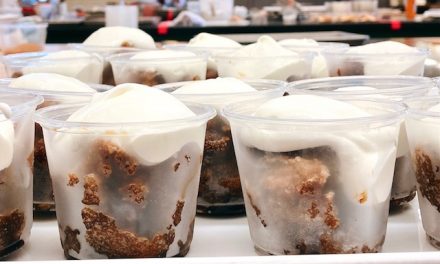Originally published in the Taste Our Love for the Land cookbook, published 2015.
In recent years I’ve been involved in one of the most critical environmental issues of our time, one that could permanently change the world’s food supply of certified sustainable salmon. For the past 130 years, Bristol Bay in Alaska has supported a thriving commercial salmon fishery providing more than 14,000 jobs each year and generating over $1.5 billion annually. With an average of 37.5 million salmon returning to its watershed each summer, Bristol Bay is one of the last great wild salmon fisheries on Earth, supplying nearly fifty percent of the world’s sockeye salmon.
Pebble Mine, a facility proposed by a foreign mining company, could threaten and destroy all of this. With its massive size, sensitive location and sulfide-filled ore body, Pebble Mine is the wrong mine in the wrong place. Even without an accident, Pebble’s footprint alone would destroy up to ninety-four miles of salmon-producing streams, and 5,350 acres of wetlands, lakes and ponds in the region.

“The mine could permanently change the world’s food supply of certified sustainable salmon.”
Chef Tom Douglas is a restaurateur, cookbook author and radio talk show host with restaurants throughout the Seattle area. Photos: courtesy of Tom Douglas/“Taste Our Love for the Land,” 2015
While wild salmon stocks around the world have been disappearing, Bristol Bay remains a thriving salmon stronghold. It has nourished native peoples and communities for thousands of years, sustaining their subsistence lifestyle and culture. Responding to a request for action from Bristol Bay tribes, native corporations, commercial fishermen, seafood processors, sport anglers, jewelers, chefs and religious groups, the Environmental Protection Agency (EPA) conducted a comprehensive Bristol Bay Watershed Assessment that confirmed the risks and unacceptable impacts of mining on salmon spawning.
In January 2014, along with Alaska Senator Maria Cantwell, I gathered with Bristol Bay commercial fishermen at the Fisherman’s Terminal in Seattle to rally the Obama Administration to immediately protect Bristol Bay. Since that time, the EPA has made significant strides in prohibiting mining at the Bay. But while progress has been made, our fight is not over yet, and I am committed to see this through—to preserve one of our greatest natural resources and the backbone of our salmon fisheries, wildlife and native Alaskan cultures.
Kitchen Sink Fried Rice
Serves 4 | By Tom Douglas
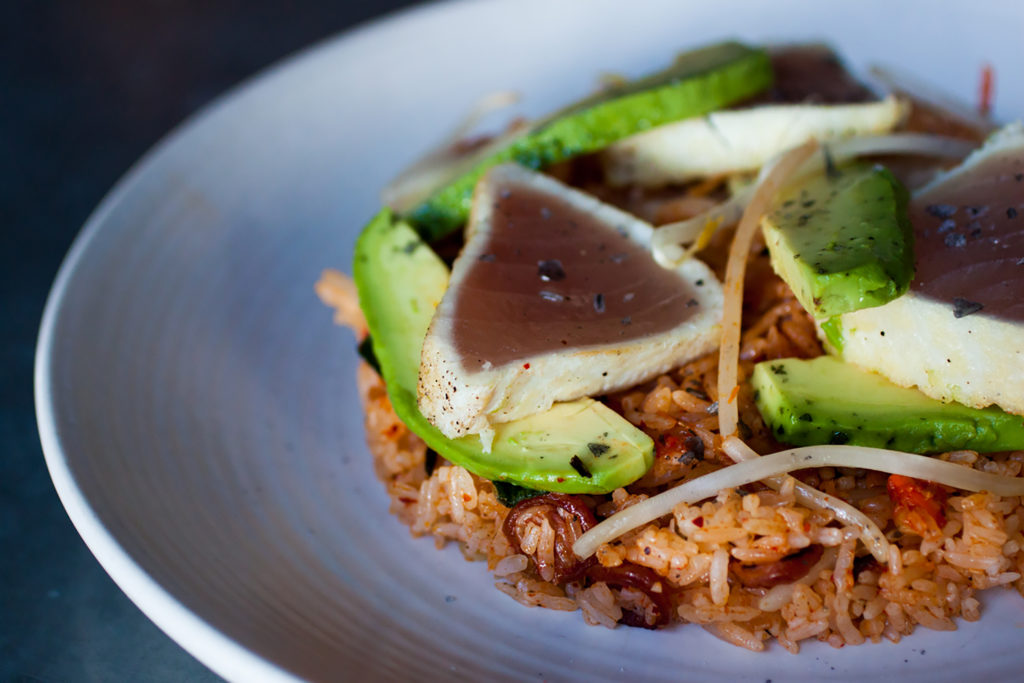
Kitchen Sink Fried Rice
Serves 4 | By Tom Douglas
2 to 4 tablespoons vegetable oil, as needed
1/3 cup thinly sliced lup cheong (sweet Chinese sausage, see note)
3 green onions, chopped, white and green parts
3 cups cooked brown or white rice, chilled overnight
½ cup napa cabbage kimchi, drained and chopped into approximately 1-inch pieces
2 tablespoons soy sauce
2 tablespoons rice wine vinegar
2 tablespoons mirin (sweet Japanese rice wine)
1½ cups bean sprouts
¾ pound sashimi grade raw fish, such as ‘ahi, thinly sliced (3 ounces per person)
2 avocados, peeled, pitted and sliced (half an avocado per person)
Black lava sea salt
Heat a large heavy skillet or a seasoned wok over medium-high heat and add 2 tablespoons of oil. When the oil is hot add the lup cheong and the green onions and fry, stirring, for one minute. Add the rice and toss to coat with the oil. (Add a little more oil if needed.) Continue to fry the rice, stirring and tossing occasionally, but allowing the rice enough time to stay in contact with the hot pan to crisp and brown. When the rice is browned, add the kimchi, soy sauce, vinegar and mirin. Stir-fry the mixture until hot, stirring and tossing the ingredients to combine. Add the bean sprouts, toss to combine, then remove from the heat.
Put the fried rice on plates and top each portion first with slices of avocado then with slices of raw fish. Sprinkle lightly with sea salt.
Note: Lup chong are firm, red, 6-inch long Chinese sausages, available in Chinese markets.
